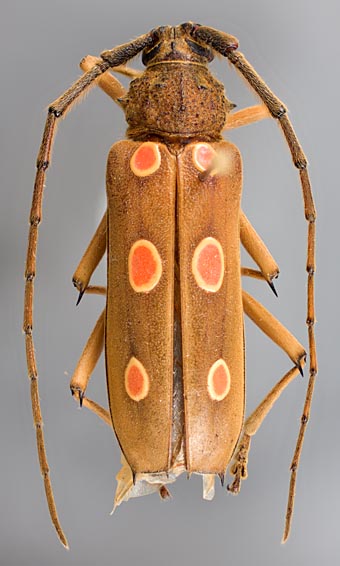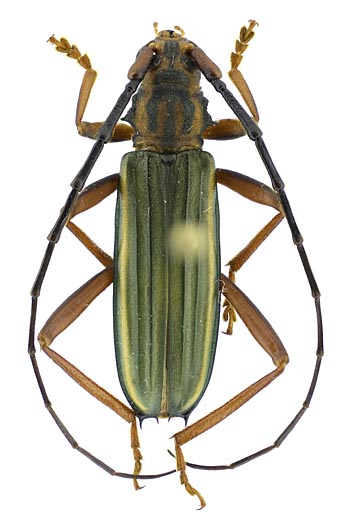|
Bothriospilini Classification
Selected References to Larvae Specimens |
 Bothriospila pulcherrima Martins & Galileo, 2012; dorsal holotype specimen, ♀ Cerambycidae:Cerambycinae:Bothriospilini Photograph © E.H. Nearns  Chlorida festiva (Linnaeus, 1758); dorsal ♀ specimen Cerambycidae:Cerambycinae:Bothriospilini Photograph © A.M. Hodson |

